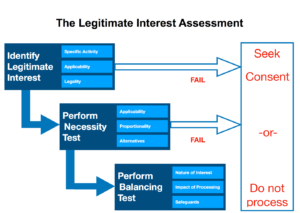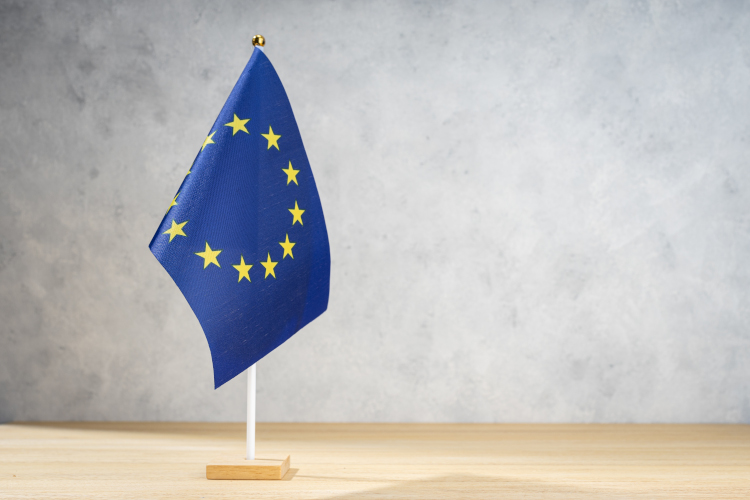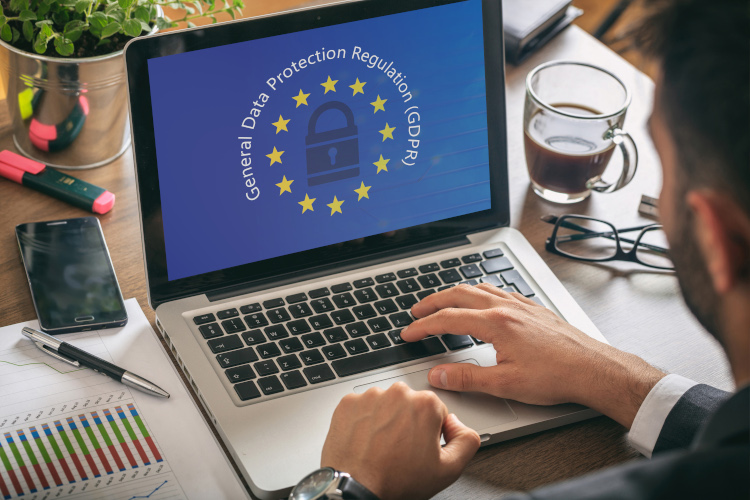Introduction
In today’s complex regulatory landscape, the role of the Data Protection Officer (DPO) has become more critical – and multifaceted – than ever. The DPO’s remit now extends into overlapping domains of privacy, technology, and security. From ensuring core GDPR compliance to grappling with emerging laws like the EU Artificial Intelligence Act, Digital Operational Resilience Act (DORA), and NIS2 Directive, DPOs serve as the cornerstone of organisational accountability. At XpertDPO, we have witnessed this evolution first-hand. Our team of DPO experts collectively oversees millions of personal records across 50+ countries, providing pragmatic guidance to clients ranging from public bodies to startups. Join us as we explore the full scope of a DPO’s role in 2025. We draw on XpertDPO’s specialists extensive experience and our company ethos, trust, transparency, education, and sustainable compliance as we examine how DPO responsibilities have expanded under new regulations, how DPOs champion the rights of vulnerable individuals and high-risk processing operations, and why an ethical, human-centred approach is paramount in data protection. Whether your organisation is considering an outsourced DPO service or looking for specialist DPO support to reinforce an in-house team, understanding the DPO’s evolving role is key to building a strong compliance foundation.
The Core Responsibilities of a DPO
Under GDPR, a Data Protection Officer’s duties are clearly defined, serving as a baseline for today’s broader expectations. Article 39 of the GDPR outlines tasks including monitoring and auditing compliance, informing and advising the controller or processor of their obligations, raising awareness and training staff, providing advice on Data Protection Impact Assessments (DPIAs), and acting as the contact point for supervisory authorities. In practice, this means the DPO is an independent advisor and watchdog: they help map and check processing activities, ensure policies are followed, and advise on how to embed privacy by design in projects. Crucially, the GDPR mandates that the DPO must be involved “properly and in a timely manner” in all issues relating to personal data. This places the DPO as an important voice in corporate governance. Ideally, a DPO participates in senior management discussions and any decision with data protection implications. By being at the table early, DPOs facilitate compliance and champion a privacy-by-design approach in business processes. In essence, a DPO functions as a “compliance orchestrator”, liaising between stakeholders like management, IT, legal, data subjects, and regulators, to ensure data protection is woven into the organisational fabric.
At XpertDPO, we reinforce these core responsibilities with a pragmatic and client-centric approach. As Stuart Anderson (Founder & CEO) emphasises, doing things “the right way, both ethically and morally” is non-negotiable. Our DPOs do not engage in fear-based compliance or box-ticking exercises. Instead, we focus on educating stakeholders and delivering realistic, risk-based advice that builds trust. For example, rather than issuing academic reports of problems, we provide practical guidance and leadership to implement solutions, helping clients build a robust yet sustainable compliance framework. This approach aligns with our belief that compliance is not about stoking fear of fines, but about empowering organisations to handle data responsibly, ultimately turning regulatory requirements into opportunities to strengthen reputation and efficiency. By fulfilling the DPO’s core tasks with integrity and insight, and by being a visible champion of privacy, the DPO lays the groundwork for a culture of compliance that stands up to scrutiny.
Beyond GDPR: Navigating an Expanding Regulatory Landscape
In 2018, the GDPR set the stage for data protection, but the regulatory horizon has continued to broaden. Today’s DPO must interpret and integrate multiple overlapping frameworks effectively wearing several hats at once. The introduction of the EU Artificial Intelligence Act in 2024 is a prime example. This regulation creates new compliance obligations for organisations deploying AI, especially those developing “high-risk” AI systems. DPOs are now expected to understand AI-specific requirements around data governance, transparency, algorithmic fairness and bias, and to ensure these are addressed alongside GDPR obligations. For instance, if a company uses personal data to train machine learning models, the DPO needs to verify that transparency requirements (e.g. notifying individuals about automated decisions) and risk mitigation measures for AI are in place on top of standard GDPR compliance. Notably, regulators themselves are recognising this convergence: the Irish Data Protection Commission (DPC) recently sought a European Data Protection Board opinion on aspects of AI regulation, underscoring the complexity and urgent need for DPO expertise in managing overlapping compliance regimes.
Beyond AI, other EU initiatives add to the DPO’s portfolio. The EU Political Advertising Regulation (adopted in 2024) directly involves data protection authorities in monitoring political ads, which means DPOs in any organisation engaged in political advertising must expand their oversight to include stringent transparency and consent rules during election periods. Additionally, DPOs cannot ignore the Digital Services Act (DSA) and Digital Markets Act (DMA), while primarily focused on online platforms and competition, these laws intersect with privacy (for example, content moderation data or online advertising data use) and may require DPO input on compliance strategies. Furthermore, classic data protection companions like the ePrivacy Directive remain relevant, especially for industries handling electronic communications or cookies. In sum, DPOs face a “multifaceted digital regulation landscape” that demands a broader knowledge base.
Two critical relative newcomers are reshaping cybersecurity and resilience expectations, which in turn influence the DPO’s role: DORA and NIS2. The Digital Operational Resilience Act (DORA), effective from early 2025, introduced harmonised ICT risk management requirements for banks, insurers, and other financial entities. While DORA is about cybersecurity and operational continuity, it dovetails with data protection, for example, ensuring that personal data remains secure and accessible during cyber incidents or outages is part of both DORA resilience and GDPR integrity requirements. In organisations subject to DORA, a DPO will likely collaborate with risk and IT teams to align data protection controls with the broader operational resilience framework. This might include advising on vendor due diligence (since third-party ICT providers are in scope) and incident response plans so that a cyber attack doesn’t also become a data breach disaster. Meanwhile, the NIS2 Directive (which EU member states transpose into national laws 2024–2025) greatly expands the range of sectors obliged to maintain robust cybersecurity measures and report incidents. NIS2 marks a shift in viewing cybersecurity as not just an IT issue but a governance and legal compliance issue which is something DPOs are well-positioned to appreciate. As NIS2 widens from 6 sectors to 23 sectors (including healthcare, energy, transport, public administration, digital providers, and more), many more organisations will fall under both NIS2 and GDPR. This convergence means DPOs will work more closely with CISOs and security officers, embedding privacy considerations into cyber risk management and breach response, and ensuring that personal data breach notification (under GDPR) aligns with NIS2’s incident reporting duties. In effect, the DPO becomes a key player in enterprise cybersecurity governance, helping bridge the gap between technical security measures and legal compliance.
The net effect of these developments is a dramatic increase in the scope and complexity of the DPO’s role. Internally, we describe this as the DPO moving from “GDPR specialist” to holistic compliance strategist. A June 2025 analysis in our team noted how this evolving landscape “significantly increases the complexity and breadth of responsibilities falling under DPOs”. DPOs must broaden their expertise to cover AI ethics, advertising rules, sectoral laws, and cybersecurity standards. This brings challenges: continuous training needs, potential resource gaps, and greater risk exposure for organisations that fall behind. Overlapping regulations mean that non-compliance risks now come from multiple angles, not just data protection authorities, but also consumer protection, AI oversight bodies, banking regulators, etc. Keeping up can strain even well-resourced compliance teams. As the DPC observed in its annual report, regulatory expectations are rising, and organisations must empower their DPOs with adequate resources to meet these demands. For many, this means investing in training, better tools, and perhaps augmenting the DPO function with external expertise (a point we’ll return to when discussing support models). The takeaway is clear: a modern DPO operates in a broad regulatory context, acting as a lynchpin to interpret and reconcile various compliance requirements. With the right support, a DPO can turn this challenge into an opportunity by helping the organisation stay ahead of the curve and avoid the costly scramble of last-minute compliance firefighting.
Driving Accountability: RoPA and Governance Structures
An effective DPO establishes strong governance practices to ensure ongoing accountability. A fundamental tool in the DPO’s kit is the Record of Processing Activities (RoPA). Article 30 GDPR requires organisations to document what personal data they process, for what purposes, where it flows, how long it’s kept, and what safeguards protect it. While this can seem like a paperwork exercise, a well-maintained RoPA is actually the backbone of a privacy governance program. It demonstrates accountability (fulfilling GDPR’s Article 5(2) principle) and provides an up-to-date map of the organisation’s data processing landscape. XpertDPO’s experience has shown that a comprehensive RoPA is more than a compliance checklist – it’s a practical dashboard for the DPO and stakeholders. For example, our team RoPA development methodology for clients involves using the “5Ws” methodology (Who, What, Why, Where, When) to capture each processing activity in detail. This granular approach ensures that for every process we documented the purpose and legal basis (Why), the data involved (What), the responsible parties and affected data subjects (Who), the IT systems and storage locations (Where), and the retention and security measures (When). The result is a living document that supports transparency, audit readiness, and internal oversight, and links directly to other compliance tasks like DPIAs and policy reviews. As we noted above, a good record forms the foundation for managing data subject rights, conducting DPIAs, responding to information requests, and handling breaches. In other words, when a DPO has a clear picture of the data flows, they can more easily flag risk areas, respond to incidents, and guide decision-making across departments.
Beyond maintaining records, DPOs influence the broader governance structure for data protection. This often involves establishing or advising a privacy governance committee, defining data protection policies and standard operating procedures, and integrating data protection into corporate risk management. For example, DPOs might introduce a DPIA procedure, a data breach response plan, and regular compliance reporting to the executive or board level. At XpertDPO, our DPOs frequently help clients set up governance frameworks that fit their context, be it a multinational tech company or a local government authority. A recurring theme is ensuring clarity of roles and inter-departmental cooperation. The DPO often works as a liaison between legal, IT, HR, and business units to implement consistent practices. A notable area is interagency data sharing, especially for public sector bodies that must share data to deliver services. Here, the DPO’s governance role is crucial in drafting data sharing agreements or MOUs, defining each party’s responsibilities, and ensuring compliance with laws while enabling the underlying public interest task. We’ve seen how poor frameworks can impede critical work: a recent analysis of child protection services in Ireland highlighted how the lack of a statutory data-sharing framework between agencies (e.g. child and family services, police, health) created hesitancy and gaps in protecting children. DPOs in such sectors strive to prevent data protection from becoming a barrier by advocating for “safe harbours” in the law or clear guidelines that allow information exchange when it’s truly necessary to protect vital interests like a child’s safety. The Irish DPC has explicitly stated that “data protection should never be used as an excuse, blocker or obstacle to sharing information where doing so is necessary to protect the vital interests of a child”. A DPO upholds this principle by ensuring that staff understand the circumstances under which data can be shared lawfully (for example, under GDPR’s vital interest legal basis or relevant national laws), and by putting in place protocols so that urgent information flows happen with proper safeguards (such as documented risk assessments and post-sharing reviews).
In summary, strong governance and record-keeping are where the DPO’s diligence shines. By maintaining comprehensive RoPAs and clear procedures, the DPO helps the organisation stay audit-ready and prevents compliance from slipping through the cracks as business and technology evolve. Governance is also the arena where the DPO’s value to the leadership becomes evident: through regular reporting and metrics (e.g. number of DPIAs done, training completed, incidents managed), the DPO gives the board or management a clear view of the organisation’s data protection posture. This reporting elevates data protection to a standing item on the governance agenda, fostering a culture of accountability from the top down.
Privacy by Design and Data Protection Impact Assessments (DPIAs)
Given the rapid pace of digital innovation, one of the DPO’s key roles is to operationalise privacy by design, embedding data protection considerations into new projects, systems, or business processes from the outset. The primary tool for this is the Data Protection Impact Assessment (DPIA). Whenever an initiative is likely to result in high risk to individuals (think: deploying surveillance cameras, launching a customer profiling program, rolling out a new health app, or implementing AI to make decisions about people), a DPIA is required under GDPR. The DPO is central to this process: GDPR explicitly requires controllers to seek the DPO’s advice on DPIAs (GDPR Article 35(2)). In practice, we find the DPO often initiates or coordinates the DPIA process, because business teams may not always recognise when a DPIA is needed.
A DPO brings methodology to DPIAs by identifying high-risk indicators such as use of special category data, large-scale profiling, vulnerable individuals’ data, or innovative tech usage. These factors raise red flags that trigger a deeper examination. In client work, examples we would note include multiple high-risk factors: the collection of sensitive data (health and criminal check information), processing affecting thousands of people within a mandated system nationwide, and involvement of children’s data through vetting processes. As DPOs, we ensure the organisations recognise these triggers and complete a DPIA. We help outline the assessment to cover all bases: necessity and proportionality of the new processing, identification of privacy risks, consultation of stakeholders, and documentation of mitigation measures like access controls and data minimisation. We advise the client to integrate the DPIA timeline with their project timeline so that privacy considerations could influence design decisions (rather than being an afterthought). By doing so, when new regulations or systems go live, privacy safeguards are baked in (for example, forms redesigned to limit data collected, clear consent language added, extra encryption on the database, etc.), and the residual risks come down to an acceptable level.
Conducting thorough DPIAs not only protects individuals but also the organisation as it’s far better to catch a potential compliance issue or design flaw early than to discover it under regulatory scrutiny or through a breach. DPOs also decide when to escalate a DPIA to regulators. Under GDPR, if a DPIA finds high risk that cannot be mitigated, the DPC must be consulted (Article 36). A savvy DPO will work hard to address risks to avoid this outcome but will not shy away from recommending consultation when warranted. Our team has experience preparing consultation packages for regulators, where we, on behalf of the client, demonstrate due diligence and seek feedback. This process can actually build trust with regulators if handled transparently.
Moreover, DPIAs are not one-off checkboxes; they should be revisited throughout a project lifecycle. XpertDPO encourages clients to treat DPIAs as living documents that are updated when something changes (like a new data element added, a new recipient, or a change in technology). We help create DPIA templates and procedures so that internal teams can carry out preliminary assessments and know when to involve the DPO. As part of specialist DPO support services, we might review clients’ DPIAs and provide a “second pair of eyes” to ensure nothing is missed. This is especially valuable in emerging areas such as AI ethics assessments, where domain-specific questions (e.g. about algorithmic bias or explainability) need to be integrated into the DPIA process. Ultimately, by leading DPIAs and advocating privacy by design, the DPO functions as an enabler: enabling the business to innovate with confidence. When product teams know the DPO will guide them through a DPIA, they are less likely to delay or avoid compliance, and they see it as part of the project’s quality assurance. This proactive stance is far better than patching privacy onto a finished product. It’s a tangible way the DPO helps “get ahead” of problems rather than react after the fact, a value XpertDPO instils in all our engagements.
Championing Data Subject Rights and a Rights-Based Practice
One of the DPO’s most important duties is to ensure that the organisation respects and facilitates the rights of individuals (data subjects). Under GDPR and related laws, people enjoy a suite of rights, to access their data, correct it, erase it, object to processing, and more, and these rights are grounded in fundamental values of privacy and personal autonomy. A DPO therefore acts as a champion of these rights internally, often designing the processes by which the company handles requests and ensuring a respectful, lawful response every time. This is sometimes referred to as a “rights-based practice” in data protection: keeping the impact on the individual’s rights and freedoms at the centre of all decisions.
At XpertDPO, we place particular emphasis on protecting the rights of vulnerable individuals, such as children, the elderly, or those with impaired decision-making capacity, because the risks to them can be greater. In fact, our Governance & Policy Lead, Dolores Martyn, was nationally recognised for her contributions to safeguarding children’s data rights, earning awards for children’s data safeguarding that reflect XpertDPO’s commitment to strong, human-centred data governance. But what does protecting vulnerable groups mean in practice for a DPO? For one, it involves ensuring enhanced safeguards and ethical scrutiny when data about vulnerable people is processed. For example, children have specific protections under GDPR (like requiring parental consent for young kids’ data in online services, per Article 8 GDPR). A DPO will advise their organisation to build compliant age-verification or consent mechanisms and to apply stricter standards of transparency that a child can understand. Moreover, DPOs must weigh the balance between protection and participation rights of children – enabling, say, a teenager’s right to have a say in how their data is used (consistent with the UN Convention on the Rights of the Child), while still ensuring their safety. In healthcare or social care contexts, when dealing with patients with limited capacity or adults under guardianship, a DPO needs to verify that the legal basis for processing is sound (perhaps relying on consent from a legal representative or on vital interest grounds) and that any data sharing with caregivers or agencies is done lawfully and minimally. These scenarios can be complex; an experienced DPO navigates applicable laws such as assisted decision-making legislation or mental health acts in tandem with GDPR.
A rights-based practice also means that when individuals exercise their rights (like filing a Subject Access Request, or asking to delete their data), the organisation responds in good faith and within legal timeframes. The DPO typically establishes internal procedures for this: how to log requests, authenticate the requester, search for data, and provide a complete and clear response. If any exemptions apply (for example, certain law enforcement data may be exempt from access), the DPO advises on applying them narrowly and consistently. In our work, we often provide DSAR support services to clients, helping them streamline handling of access requests, especially when volumes spike or when dealing with sensitive records. We found that clear guidance to staff and use of templates (for acknowledgment, response letters, etc.) greatly reduce errors in rights responses. The DPO also trains frontline employees (like customer service or HR who might receive requests first) to recognise a data rights request and route it properly. By doing so, rights requests become an opportunity to build trust with individuals rather than a compliance headache.
Another crucial area is handling complaints and queries from data subjects. DPOs frequently act as an escalation point for data protection complaints, trying to resolve issues amicably before they go to regulators. For instance, if someone complains that they can’t unsubscribe from a mailing list or that their personal data was unfairly used, the DPO investigates and mediates a resolution (perhaps ensuring the data is deleted and the cause of the lapse is fixed). This responsive, people-focused approach is not only required by law but is also core to Stuart’s values of “client trust and doing right by people”. An ethical DPO does not view individuals’ rights as annoying obligations; rather, they acknowledge that these rights are the manifestation of privacy as a human right within the organisation’s daily operations.
Finally, a rights-based ethos influences how an organisation designs its services and policies. Take, for example, the rise of AI and algorithmic processing: a DPO with a rights-oriented mindset will push for mechanisms that allow individuals to contest automated decisions or to get meaningful information about how an algorithm uses their data (GDPR’s Article 22 and transparency requirements). Similarly, in marketing activities, the DPO might advocate for ethical marketing practices e.g. not targeting vulnerable segments like children with certain ads, or respecting opt-outs diligently, even beyond what the law strictly requires, as a matter of company values. This approach feeds into sustainable compliance: doing the right thing not only checks the legal box but also upholds the organisation’s reputation and social responsibility. In regulated sectors or public service, this is doubly important; public-sector DPOs often adhere to broader public law principles and human rights frameworks. We’ve guided public agencies in adopting a “human rights impact assessment” lens alongside privacy impact assessments for initiatives, to ensure that things like equality and non-discrimination are considered. All these efforts by the DPO help ensure that data protection is not just about avoiding fines, but about respecting and reinforcing individual rights which in turn builds public trust.
Supporting High-Risk Processing and Innovative Technologies
Organisations engaged in high-risk processing activities, such as large-scale profiling, biometric data use, or systematic monitoring, rely heavily on their DPO to keep those activities in check. High-risk processing is often where law, ethics, and technology collide. A classic example is deploying facial recognition or biometric identification: inherently high-risk due to sensitivity and potential impact on individuals. A DPO’s role here starts from initial risk assessment (DPIA), as discussed, but extends to continuous oversight. The DPO will set conditions for such processing (e.g. requiring that biometric data be encrypted, access-controlled, and periodically reviewed for necessity). They will also monitor outcomes, for instance, checking if an AI system’s outputs have bias against a protected group, or if a marketing algorithm ends up profiling vulnerable consumers in ways that might be unfair or intrusive.
Another burgeoning area is the use of personal data in training AI or in big data analytics. There is often uncertainty in these domains about how GDPR principles apply. DPOs serve as translators between data scientists and legal requirements: explaining to AI developers what “data minimisation” means in practice or helping find ways to pseudonymise data sets so that innovation can proceed in a privacy-preserving manner. Under the forthcoming AI Act, certain high-risk AI systems will require a conformity assessment and risk management, which will include looking at training data governance, record-keeping, transparency, and human oversight. It’s natural that a DPO. with expertise in data governance, will be part of that compliance effort. Indeed, our team’s internal discussions have noted that “DPOs must now interpret and integrate compliance with GDPR alongside AI-specific obligations like transparency, accountability, and bias oversight”. In anticipation of the AI Act, we have been conducting AI risk assessments for clients (essentially, mini-DPIAs focused on AI systems), examining not just privacy, but also the broader ethical impacts of AI deployments. This proactive stance means the DPO helps the organisation steer AI innovation responsibly, avoiding pitfalls that could harm individuals or lead to public backlash.
High-risk processing often goes hand in hand with heightened regulatory scrutiny. Whether it’s a financial firm handling large volumes of sensitive financial data, a health-tech company processing genetic information, or a social media platform serving minors, regulators pay close attention. A seasoned DPO recognises this and will ensure the organisation is “regulator-ready.” That involves thorough documentation (policies, DPIAs, records of decisions), internal audits, and sometimes even engaging with the regulator in advance. For example, some of our public-sector clients hold biannual meetings between their DPO and the DPC’s office to discuss upcoming projects, a practice we encourage as it demonstrates transparency and can glean informal guidance. Even in the private sector, if a company is planning something novel (say, rolling out a new IoT device that collects personal data in public spaces), we might advise them to seek advisory consultation with the regulator or at least prepare a briefing in case questions arise. The DPO would typically spearhead this, framing the issues in a compliance context. This approach aligns with XpertDPO’s value of proactive regulatory engagement, ensuring our clients are not caught off guard by new enforcement trends.
Moreover, when things do go wrong, like a suspected data breach or an incident, high-risk environments benefit immensely from DPO expertise. The DPO coordinates breach investigations, assesses notification obligations, and recommends remedial actions. In high-risk sectors, regulators often inquire not just about the breach itself but how the organisation’s leadership and DPO responded. We have provided breach response support as part of our specialist DPO services, essentially being on-call for clients when an incident hits, to guide them on containment, forensics liaison, communications, and legal reporting. This “muscle memory” from handling multiple breaches across industries allows us to give calm, pragmatic advice under pressure which is a lifesaver for a small organisation facing its first serious incident. By learning from each incident (internal or industry-wide), DPOs also feed improvements back into the system: updating policies, enhancing access controls, instituting new training if human error was a cause, etc. This continuous improvement mindset is particularly crucial in high-risk processing operations where even a small lapse can have severe consequences.
Public Sector DPOs and Interagency Collaboration
Public sector organisations (like government departments, local authorities, health services, education bodies) are mandated under GDPR to appoint DPOs. These DPOs face some unique challenges: they deal with large-scale citizen data, often including sensitive categories (health, criminal, social welfare information), and they must juggle GDPR with sectoral laws and duties to provide public services. One key aspect we see in public sector is the need for interagency data sharing. Effective public services sometimes require multiple agencies to coordinate, for example, a child protection case might involve education, child & family agency, police, and healthcare providers. However, each agency has its own legal obligations and constraints on sharing data. The DPO in a public agency thus must be well-versed in not only GDPR, but also any enabling legislation or obstacles to sharing. As noted earlier, gaps in legal frameworks can create friction which is something a public-sector DPO often has to flag and work around by establishing interim agreements or protocols. Public-sector DPOs also handle Freedom of Information (FOI) or Access to Information requests that intersect with personal data. While FOI is separate from GDPR, they often overlap (e.g., someone requests records that include personal data of others and the DPO might need to advise on redactions under data protection principles).
Another point for public bodies is demonstrating compliance transparently. The public rightfully expects that government and services handle data with a high level of care. DPOs in public bodies might publish Data Protection Impact Assessments summaries for significant projects or maintain publicly accessible records of processing (some countries encourage this). They also tend to provide more extensive privacy notices and engage in public consultations regarding new programs that involve personal data. For example, if a city council introduces CCTV in a new area, the DPO might oversee a public consultation or communications plan explaining the privacy implications and safeguards, to build public trust. This goes hand in hand with rights-based practice; the public sector often serves vulnerable populations (e.g., recipients of social services), so the DPO’s role in protecting those individuals’ data and ensuring fair processing is critical.
XpertDPO has substantial experience acting as outsourced DPO for public-sector clients, including departments, regulatory bodies, and healthcare agencies. We understand that public service ethos must align with data protection. One concrete example: in one of our engagements, a government agency needed to launch an interagency platform for case management involving minors. We provided an outsourced DPO who worked closely with all stakeholders to design a governance model: drafting Data Sharing Agreements between agencies, defining access controls based on roles, and setting up a joint oversight committee for the platform’s data use. The DPO ensured that child safeguarding remained the paramount concern, echoing the DPC’s guidance that child welfare can justify data sharing, but also implemented strict audit logs and consent procedures where appropriate to protect privacy. This balanced approach allowed the agencies to cooperate more freely, knowing that clear rules were in place and that a DPO was monitoring compliance continuously.
Public bodies also often find themselves as pioneers in responding to new laws (since governments implement laws like NIS2 or sectoral rules). Their DPOs, therefore, might be among the first encountering how those intersect with GDPR. For instance, under the EU’s Law Enforcement Directive (for police data) or regulations like the forthcoming EU Child Sexual Abuse Regulation (which may require certain content scanning), DPOs in those authorities must carefully reconcile privacy with other legal mandates. It’s a delicate position but one where the DPO’s balanced view and ethical stance are invaluable. As Stuart frequently reminds our public-sector clients, transparency and honesty about what you’re doing with data goes a long way in maintaining public trust. A DPO will thus encourage public bodies to be open about their data processes, report breaches to authorities and affected people promptly, and remediate issues comprehensively. That level of openness can be difficult in practice, but it reinforces the public’s confidence that someone (the DPO) is independently watching over how their information is handled.
XpertDPO’s Ethos: Trust, Transparency, Education, Sustainable Compliance
Throughout all these facets of the DPO role, certain core values shine through, values that XpertDPO has embraced from day one. Our philosophy is built on ethical practice, client trust, and pragmatism. We believe a DPO must be more than a rule-enforcer; they must be a trusted advisor who helps the organisation do the right thing, not because of fear of penalties, but because it’s integral to the business’s integrity and success.
- Trust and Transparency: A DPO’s effectiveness hinges on trust, both the trust they build with internal stakeholders (so people come to them with issues and involve them early) and the trust they help cultivate with customers or the public. We ingrain transparency as a habit: being honest about compliance gaps, giving management a realistic picture of risks, and communicating openly with data subjects. Stuart insists on providing realistic, achievable outcomes for clients, even if it means delivering hard truths. In practice, this might mean telling a client that a project is too risky unless significant changes are made or acknowledging to a regulator when we don’t have all the answers but are committed to improvement. By not overpromising (“we do not promise 100% compliance” is a mantra), we set attainable goals and then deliver on them. This honesty nurtures long-term relationships, where clients trust our advice because they know we are not hiding inconvenient facts or sugarcoating compliance obligations.
- Education and Empowerment: Education is at the heart of XpertDPO’s mission. We see every engagement as an opportunity to raise our clients’ understanding of data protection. A great DPO doesn’t hoard knowledge; they share it widely, training staff from the C-suite to the front line. We offer formal training modules (through our XpertAcademy, for example) and informal mentorship. Our approach with clients is very collaborative: rather than just handing down a policy, we explain the why, why this policy matters, how it protects the business and individuals. This aligns with Stuart’s view that educating clients fosters compliance that is pragmatic and sustainable. An example is how we handle a DPIA with a client’s team: we’ll involve their project managers or IT leads in the process, teaching them how to identify privacy risks, so next time they already have that mindset. Over time, this builds an internal culture where people become privacy champions in their own right, reducing reliance on the DPO for every small decision. Education also means staying educated ourselves, our DPOs continuously update their skills (be it getting AI governance certifications or attending cybersecurity forums) so that we can expertly guide clients through new challenges.
- Pragmatism and Sustainable Compliance: We define sustainable compliance as compliance that aligns with business objectives and can be maintained long-term. It’s easy to draft a thick policy document; it’s harder to implement practices that actually stick. Our pragmatic ethos means we tailor solutions to each client’s reality, their industry, size, risk appetite, and resources. For small businesses, for instance, we might implement lean frameworks: a concise RoPA and a simple breach checklist might be more practical than enterprise-grade GRC tools. For larger entities, scalability and integration with existing processes is key so we might embed privacy controls into their IT change management or procurement workflows. In all cases, we avoid ‘compliance theatre’ and focus on measures that truly reduce risk. A telling example from our proposals: “We do not conduct an academic assessment that merely identifies flaws; our objective is to provide practical guidance and leadership to implement a robust, scalable GDPR compliance framework”. We live by this in DPO service delivery. The ultimate test of sustainable compliance is whether the organisation can handle data protection in stride with its growth and changes. Seeing our long-term clients pass regulatory audits, or swiftly integrate privacy in a new product launch, are moments that validate this approach.
- Independence and Integrity: A DPO must have the courage of their convictions. Independence is legally protected (GDPR says DPOs shouldn’t be instructed on their advice or penalised for their work), and we fiercely guard that independence, especially as outsourced DPOs. We make it clear in engagements that while we operate as part of the client team, our first duty is to data protection law and ethical practice. This sometimes means giving unwelcome news or pushing back on risky initiatives. But by documenting our advice and the rationale, and by communicating effectively, we maintain credibility. Over time, even sceptical executives see the wisdom in the DPO’s perspective because it saves them from compliance disasters and builds a robust reputation. Stuart’s own integrity sets the tone where he often says his goal is to “deliver on promises and hold himself accountable,” and he expects the same of each team member. We also ensure no conflicts of interest in our role, for example, if we act as DPO we do not perform conflicting consulting that would undermine our impartiality. XpertDPO’s outsourced DPO service guarantees an independent DPO with no conflict of interest for our clients which is a strong advantage over assigning someone internally who wears multiple hats.
Outsourced DPO Services vs. Specialist DPO Support
Depending on an organisation’s needs, XpertDPO offers two primary service models that anchor to the DPO role: Outsourced DPO services and Specialist DPO support for in-house teams. Understanding these options can help in choosing the right approach to data protection leadership.
- Outsourced DPO Services: This is a full-service solution where our team acts as your organisation’s named DPO, fulfilling all the tasks and responsibilities that an internal DPO would, from answering employee questions to representing the company to regulators. Outsourcing is ideal for organisations that need expert DPO oversight but do not have a qualified full-time DPO in-house. This could be a small or medium enterprise who can’t justify a senior hire, or a large entity in a high-risk sector that prefers an external specialist for independence. XpertDPO has developed tiers of outsourced DPO service to fit different contexts. For example, XpertDPO Shield is our strategic full-service DPO offering for regulated or high-risk organisations, whereas XpertDPO Assist provides a fractional DPO service tailored for SMEs that need flexibility. In both cases, clients get direct access to experienced professionals who integrate with their team. As our proposal documents state, “Our service is a practical and cost-effective solution for organisations lacking the requisite expertise to fulfil their DPO duties under the GDPR and other relevant laws across the globe”. When you engage an outsourced DPO from XpertDPO, you are tapping into a team of experts, not just one person. This means if a particular issue arises (say, a complex cybersecurity question under DORA, or a bespoke contract clause for data transfers), our DPO can draw on in-house specialists with that knowledge. It’s like having a whole compliance department at your service. Indeed, one of the benefits our clients value is that our team’s combined expertise is “far wider and deeper than would be possible for a smaller, less experienced team to maintain”. We also bring proven templates and tools (for policies, RoPAs, training etc.) so that the organisation doesn’t have to reinvent the wheel. And because outsourced DPO is delivered as a service, clients avoid the overhead costs of a full-time hire (salary, continuous training, benefits) while still getting top-tier support. Fundamentally, our outsourced DPO services allow a company to have an independent, highly-qualified DPO at a fraction of the cost and with greater value, often providing “greater value for this key role than is possible from a single internal employee”. By outsourcing, organisations can immediately elevate their compliance posture and demonstrate to stakeholders that privacy is being handled by seasoned pros.
- Specialist DPO Support (for In-House DPOs): Not every organisation wants to fully outsource the DPO role, many have appointed an internal DPO or point person (like a Chief Privacy Officer or a legal/compliance manager wearing the DPO hat). For these clients, XpertDPO offers DPO Support services, which effectively act as a “DPO’s DPO.” This is an on-demand advisory service where our experts back up and reinforce your in-house DPO. Think of it as giving your internal DPO access to a bench of mentors and specialists they can lean on. Even the most experienced solo DPOs benefit from a sounding board, because no one person can know everything or have infinite time. Our support covers things like: reviewing tricky DPIAs, advising on novel issues (e.g. how to handle an AI deployment or a cross-border data transfer challenge), assisting with regulator correspondence or audit preparation, providing breach response help, and doing documentation or policy reviews as needed. Crucially, this support is confidential and maintains the DPO’s independence, we operate behind the scenes to empower the DPO, not to override them. In fact, one selling point is that we help strengthen the DPO’s hand internally. For example, if an in-house DPO is facing pushback from a department about a recommendation, they can call on our independent analysis to validate their stance, sometimes just having an external expert confirm the risk assessment can persuade management. As our service description puts it, “Support isn’t interference. Our role is advisory; we help you protect your independence by offering neutral, well-reasoned input when internal pressure builds.”. We also provide practical aids like templates, checklists, and access to our training modules so the in-house DPO can continuously upskill. This model is highly flexible: some clients engage us on a retainer for a set number of hours each month, others on a project basis (e.g. help with a major GDPR re-audit), and some just for ad-hoc second opinions. The overarching goal is to ensure the internal DPO is never left isolated or overwhelmed. They don’t have to guess at solutions in a vacuum or feel alone facing a regulator, we’re essentially a safety net and a knowledge reservoir. Our tagline “We’re the DPO for your DPO” truly encapsulates it. By choosing specialist DPO support, organisations get the best of both worlds: their internal person remains the accountable figure (maintaining continuity and internal ownership), but that person is bolstered by expertise that keeps them at the cutting edge of compliance expectations.
Both outsourced DPO and support services exemplify XpertDPO’s leadership in DPO delivery. We are among the few providers that have a dedicated support model for in-house DPOs, recognising that even companies with a privacy office can need external perspective to tackle complex challenges. And for those outsourcing entirely, our ability to plug into the client’s environment and act as a trusted insider, while maintaining an outsider’s objectivity, sets us apart. It’s worth noting that XpertDPO’s approach has been honed over hundreds of engagements and diverse sectors, meaning we come prepared with insight into best practices across industries. Our team’s collective 135+ years of specialist expertise and experience with 300+ organisations worldwide give us unmatched depth. When clients partner with us, they aren’t just meeting a compliance requirement, they are gaining a competitive edge in data protection. As one client’s Head of Legal put it, “With XpertDPO behind us, our risk is lower, our workload is lighter, and our board is confident. That’s real value.”
Conclusion
The role of the Data Protection Officer has transformed from a compliance cost-centre into a strategic asset for organisations. In a world of escalating data risks, rapid regulatory change, and increased public scrutiny, the DPO stands at the intersection of law, ethics, and technology, guiding companies to not only comply, but to do so in a way that earns trust and builds value. From maintaining meticulous records and guarding individuals’ rights, to steering AI governance and cybersecurity alignment, today’s DPO is both navigator and enabler. They ensure that innovation can proceed with privacy safeguards, and that an organisation’s pursuit of data-driven growth never loses sight of fundamental rights and freedoms.
XpertDPO is proud to be at the forefront of this field, delivering DPO services and support that exemplify expertise and ethical practice. We view ourselves as partners in our clients’ success, when our clients can confidently say their data is handled with integrity, that’s our success too. By embracing Stuart’s values of trust, transparency, education, and sustainable compliance, we’ve helped organisations large and small transform regulatory requirements into opportunities for improvement. Our Outsourced DPO Services provide organisations with immediate access to seasoned leadership in data protection, while our Specialist DPO Support empowers in-house privacy officers to excel and stay ahead of emerging challenges. In both cases, our approach is deeply pragmatic and human-centred: we don’t deal in scare tactics or one-size-fits-all templates, but in tailored solutions and honest counsel grounded in real-world experience.
Ultimately, the DPO’s role is about safeguarding trust, the trust of customers, employees, and the public that their information is respected and safe. In the coming years, as regulations like the AI Act and NIS2 take effect and new technologies continue to emerge, the DPO will be even more pivotal in organisations’ governance frameworks. Those that invest in a strong DPO function, through capable people and the right support, will be well-positioned to thrive in this environment. They will be the ones who can confidently innovate and collaborate, knowing their compliance foundation is sound. As this article has illustrated, the DPO is far more than a compliance checkbox; done right, it’s a role that integrates legal insight, ethical oversight, and strategic vision. That is the role XpertDPO has championed since our inception, and the role we continue to elevate through our services.
If your organisation is looking to strengthen its data protection leadership, consider how an outsourced DPO or specialist support from XpertDPO could provide the expertise, clarity, and confidence you need. By anchoring your compliance efforts to experienced guidance, you not only meet your obligations, you build a culture of privacy and trust that underpins long-term success. In data protection, as in business, knowledgeable guidance and principled action make all the difference. With the right DPO partner, you can navigate whatever lies ahead, secure in the knowledge that your compliance journey is on a sustainable, ethical path.








